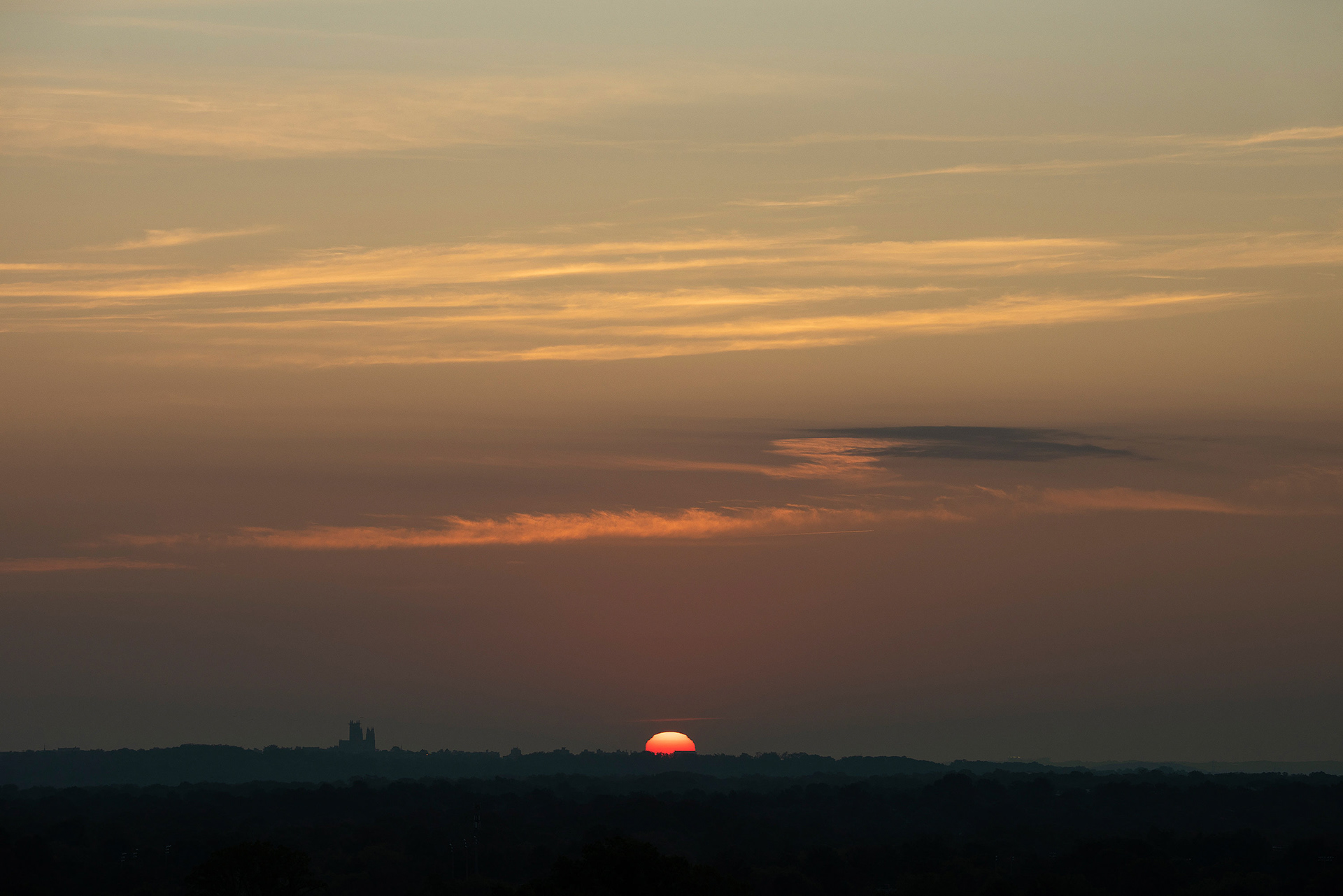The most pertinent celestial events I see are solstices and equinoxes. Both are a product of Earth's axial tilt of 23.5 degrees from its plane of orbit around the sun. As we orbit the sun each pole spends half the year leaning towards the sun creating the season of summer, and then half the year leaning away from the sun creating winter. Apart from the temperature changes, this also means that from our vantage point the sunrise appears to travel back and forth across the horizon throughout the year. A solstice is the date at which the sun reaches its maximum or minimum declination relative to the celestial equator. This happens twice each year. These dates mark the longest and shortest days of the year. An equinox is the date at which the sun crosses the celestial equator. Again, this happens twice each year. On these dates day and night are approximately equal in duration.
FUN FACT: Earth isn't always tilted 23.5 degrees. We're wobbling! Earth's axis wobbles between 22.1 degrees and 24.5 degrees over about 41,000 years. This is what drives glacial periods (ice ages) and interglacial periods. We are near the midpoint in that wobble and heading in a decreasing direction. (No, it won't happen fast enough to save us from human-created global warming... as mentioned the wobble happens over thousands of years while we're farting up a storm in dozens.)
Nothing I show you below will illustrate the wobble. I just think it's cool.
Summer Solstice
At the summer solstice the sun rises at 23.5 degrees north of the celestial equator. From my vantage point that means the sun rises about half way between Bethesda and Silver Spring, MD. This is the northernmost point that it strays during the year.
Summer Solstice | June 21, 2019
Winter Solstice
At the winter solstice the sun rises at 23.5 degrees south of the celestial equator. From my vantage point that means that the sun rises just a little south of the WETA Radio tower in Arlington, VA. This is the southernmost point on the horizon that the sun strays during the year.
Winter Solstice | December 20, 2022
Vernal and Autumnal Equinox
In terms of the position of the sun, the two equinoxes by definition look nearly identical, so I show them both below side-by-side. On both dates the sun rises just a little bit south of the National Cathedral. This is the sun's midpoint on its journey across the horizon.

Vernal Equinox | March 20, 2019
